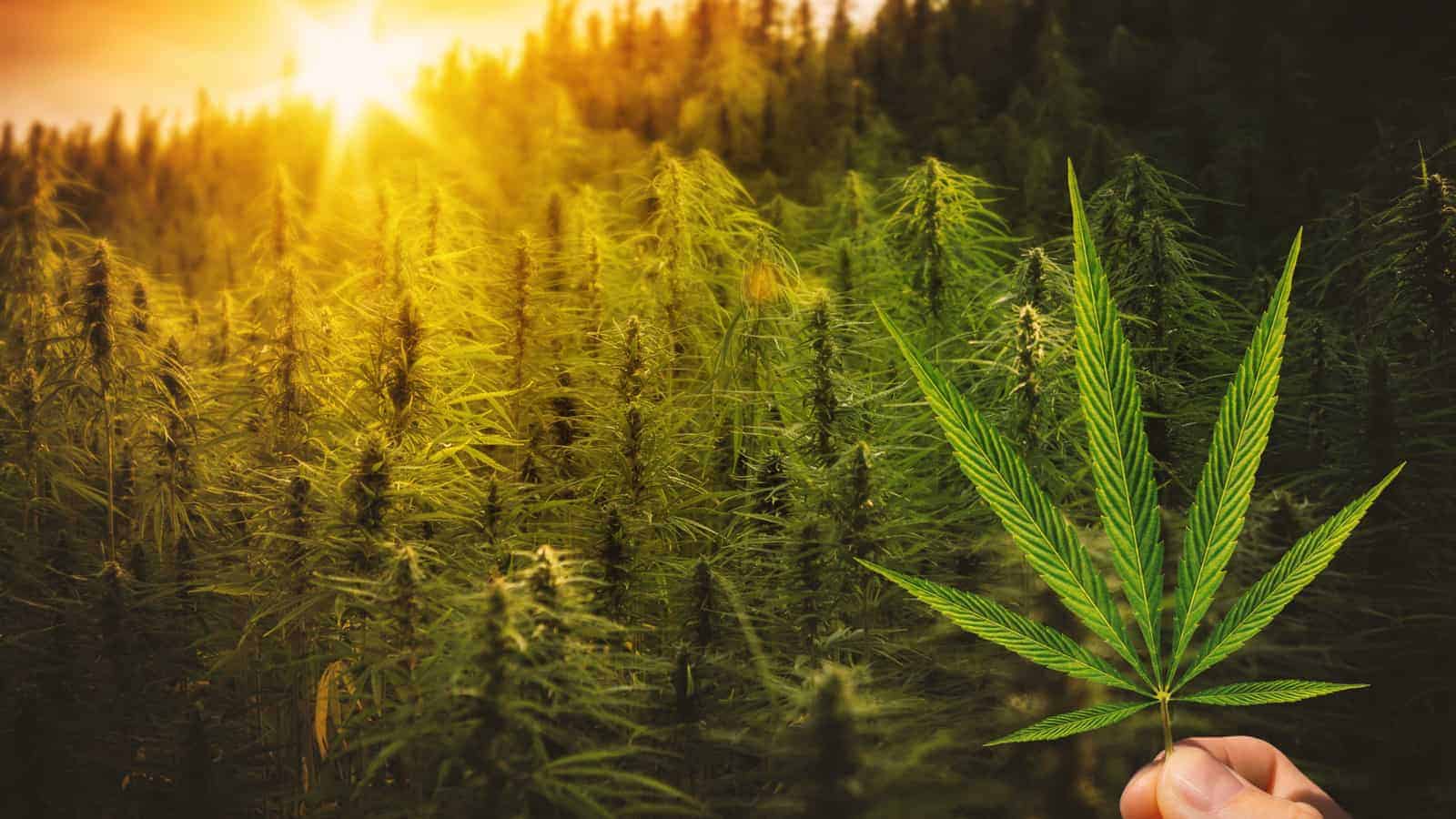If you’re at all familiar with the cannabis industry in the United States, you’ve probably heard of The Emerald Triangle. The Emerald Triangle is well known for cannabis production. But, that is the extent of the knowledge about this region for many people.
Since you’re here, you’re probably interested in learning a bit more about this paramount place. This article will explore all the key aspects of The Emerald Triangle and what makes it a significant part of the cannabis industry.
What is The “Emerald Triangle”?
Let’s start with the basics of The Emerald Triangle. The most important aspect is the location. The location of The Emerald Triangle was what attracted people to the area in the first place, sustaining such a high volume of cannabis production for so long.
Where is The Emerald Triangle?
The Emerald Triangle – not to be confused with the city that Dorthy went to in The Wizard of Oz – consists of three counties in Northern California. The southernmost of the three counties is Mendocino County. Above that is Humboldt County and next to Humboldt is Trinity County-the only one that does not sit on the coast.
Picture a literal triangle with Mendocino as the bottom point and Humboldt and Trinity as the top two points. For reference to where this triangle sits in California, Humboldt County is about 50 miles from the Oregon border.
Cultural Significance of The Emerald Triangle
The Emerald Triangle in California is not just a prominent location for cannabis production. These three counties make up the largest cannabis-producing region in the United States. This region does so well for cannabis production due to its high-quality soil and Mediterranean climate, making it the ideal location for growing marijuana at home.
The strong balance between rain and shine helps a great deal as well. The conditions of The Emerald Triangle are often referred to as a “microclimate”. Further, the climate conditions of The Emerald Triangle are not consistent with the climate in the surrounding areas of Northern California.
History of The Emerald Triangle
The Emerald Triangle is filled with a rich history that began in the 1960s, the time of counterculture in which people were looking for alternative lifestyles. Many of these people found what they were looking for when they found The Emerald Triangle.
Rejecting Urbanization
The majority of residents in this area have always been of a very environmentally conscious mindset. The Emerald Triangle is considered to be, at least in part, a result of the Back-to-the-Land movement. Scholars define this movement as “a social movement based around the idea of living a self-sufficient life close to nature.”
Many people living in or near California who believed in this movement made their way to the Emerald Triangle. They wanted to get away from the city and into nature. So, this region seemed like the place to search for the simple and independent life they wanted.
Once there, these people quickly found cannabis farming to be quite lucrative, as the area was so perfect for it. These people were able to cultivate the self-sufficient lifestyle that they dreamed of by moving to the Emerald Triangle and farming cannabis as a way to support themselves.
The Hippie Movement
The story of the Emerald Triangle can not be told without discussing the counterculture era from which it came. About 85 miles beneath this region is San Francisco was home to the famous Summer of Love in 1967. And, along with several Vietnam protests.
These events were part of the counterculture movement famous in the 1960s and 1970s. Young people were starting to reject the traditional lifestyle of marrying young and getting an office job and a house in the city.
The people who partook in the counterculture movement – either affectionately or derogatorily – were known as “hippies.” Hippies tended to be the kinds of people who believed in the Back-to-the-Land movement as well. So, it seems safe to credit the hippies of the time for ultimately making their way up to Northern California with that mindset and getting planting the seeds for what the Emerald Triangle is today.
Environmental and Sustainability Concerns
It may seem like The Emerald Triangle is nothing but peace, love, and weed. But, unfortunately, this place has its fair share of problems.
Crime Rate
One of the most pressing issues in The Emerald Triangle is the high crime rate, particularly in Humboldt county. We’re not talking about petty crimes either. According to The Department of Justice, that county is known for having the second-highest murder rate in California.
Humbolt can’t take the full extent of the heat for that one, though. None of these counties are known for being particularly safe. There was even a Netflix documentary about this area, affectionately named Murder Mountain. It may seem like the legalization of marijuana would have offered a quick solution to the crime problem, but it is not that simple.
The legalization of marijuana in 1996 may have aided business in the Emerald Triangle, but many of the growers do not feel the same way about the legalization of recreational marijuana. They worry that this newfound obtainability will result in decreased selling prices and increased selling fees. With that in mind, they fear that this legalization will ultimately enable big dispensaries to come in and push out the smaller, locally owned Emerald Triangle dispensaries. As a result, many growers opt to remain in the black market.
Effects on the Environment
Crime is not the only concern people have for the area in and around the Emerald Triangle. Many environmentalists worry the high volume of cannabis agriculture will have adverse effects on the landscape. People are also concerned these farms will displace animals native to the area. Consequently, leading to pesticide runoff affecting nearby communities and ecosystems.
Not to mention, cannabis farming uses a pretty high volume of natural resources like water. The conditions in this area pose a concern for wildfires as well. Unfortunately, the Venn diagram of conditions ideal for quality cannabis growth and conditions that create wildfire danger would look a lot like a singular circle.
In recent news, wildfires in Northern California have been tearing through the Emerald Triangle and threatening countless cannabis crops. While it’s not a direct result of cannabis farming, it’s something that farmers and other Northern California residents alike show concern about.
5 Fun Facts of The Emerald Triangle
- Studies show two-thirds of the local economy in Mendocino can be attributed to marijuana farming, generating approximately one billion dollars every year.
- October is the prime time for harvest in this area. This time of year has become known as “Croptober.”
- The Emerald Triangle belongs to three percent of the world, which has a Mediterranean climate.
- Marijuana from Humboldt County often comes with a seal of authenticity of sorts, as it is known for being such good quality.
- Some marijuana plants in the Emerald Triangle grow taller than 15 feet, making them more like weed trees than simple weed plants.
Final Thoughts
The Emerald Triangle was founded in the 1960s by hippies and other counterculture enthusiasts due to the Summer of Love and the Back-to-the-Land movement. Now cannabis use has become more universal, attracting all walks of life. It could even be considered a tourist attraction for new cannabis consumers!
There are tours offered of select cannabis farms, and people come from all over the world to farm during the cannabis season. A variety of conditions have enabled high-quality cannabis production over the years. And, today, it is the largest region for cannabis production in the United States. While things are not perfect and the area comes with some controversial issues, the Emerald Triangle is a big part of the cannabis community.



![[NJ] The Easiest Ways to Buy Weed in Buffalo A Full Guide (5)](https://neonjoint.com/wp-content/uploads/NJ-The-Easiest-Ways-to-Buy-Weed-in-Buffalo-A-Full-Guide-5-300x169.jpg)


